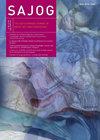An audit of the labour epidural analgesia service at a regional hospital in Gauteng Province, South Africa
IF 0.4
Q4 OBSTETRICS & GYNECOLOGY
引用次数: 2
Abstract
Background. Neuraxial analgesia in the form of a labour epidural has been shown to be the most effective analgesic strategy for the labouring mother. In developed countries, data are readily available as to the number of women receiving labour epidural analgesia, as well as the complication rates of labour epidurals. However, data for South Africa (SA) on labour epidural analgesia services are limited, and there were no published data for Rahima Moosa Mother and Child Hospital (RMMCH), Johannesburg, SA. Objective. To describe the labour epidural analgesia service at RMMCH over the period of 1 year. Methods. A retrospective audit using consecutive convenience sampling was done reviewing all epidural records at RMMCH from 1 January to 31 December 2014. Results. During the study period, labour epidural analgesia was administered for 187 (1.6%) of 11 853 deliveries. Epidural records were collected for all administered labour epidurals. The most common indications documented were labour analgesia (41.7%) and primigravida (28.9%). Labour epidurals were not administered for specific medical conditions. The incidence of complications was 22.6%, and these were minor and self-limiting. Hypotension was the most common complication (12.3%). Patient satisfaction with labour epidural analgesia, where documented, was high (98.4%). Conclusion. This audit revealed a low incidence of labour epidural analgesia at RMMCH during the study period. The incidence of complications was in keeping with that seen in developed countries. Poor documentation was noted to be a problem.对南非豪登省一家地区医院分娩硬膜外镇痛服务的审计
背景分娩硬膜外神经轴镇痛已被证明是分娩母亲最有效的镇痛策略。在发达国家,关于接受硬膜外分娩镇痛的妇女人数以及硬膜外分娩并发症发生率的数据很容易获得。然而,南非(SA)关于分娩硬膜外镇痛服务的数据有限,南非约翰内斯堡Rahima Moosa母婴医院(RMMCH)也没有公布数据。目的。描述RMMCH分娩硬膜外镇痛服务1年的情况。方法。采用连续方便抽样进行回顾性审计,审查2014年1月1日至12月31日RMMCH的所有硬膜外记录。结果。在研究期间,11853例分娩中有187例(1.6%)采用了分娩硬膜外镇痛。收集所有分娩硬膜外用药的硬膜外记录。最常见的适应症是分娩镇痛(41.7%)和初产妇(28.9%)。分娩硬膜外药物不是针对特定的医疗条件使用的。并发症的发生率为22.6%,这些并发症都是轻微的、自限性的。低血压是最常见的并发症(12.3%)。患者对分娩硬膜外镇痛的满意度很高(98.4%)。结论。该审计显示,在研究期间,RMMCH分娩硬膜外镇痛的发生率较低。并发症的发生率与发达国家一致。有人指出,文件不齐全是一个问题。
本文章由计算机程序翻译,如有差异,请以英文原文为准。
求助全文
约1分钟内获得全文
求助全文
来源期刊

South African Journal of Obstetrics and Gynaecology
Medicine-Obstetrics and Gynecology
CiteScore
0.40
自引率
0.00%
发文量
5
审稿时长
15 weeks
期刊介绍:
The SAJOG is a tri-annual, general specialist obstetrics and gynaecology journal that publishes original, peer-reviewed work in all areas of obstetrics and gynaecology, including contraception, urogynaecology, fertility, oncology and clinical practice. The journal carries original research articles, editorials, clinical practice, personal opinion, South Africa health-related news, obituaries and general correspondence.
 求助内容:
求助内容: 应助结果提醒方式:
应助结果提醒方式:


